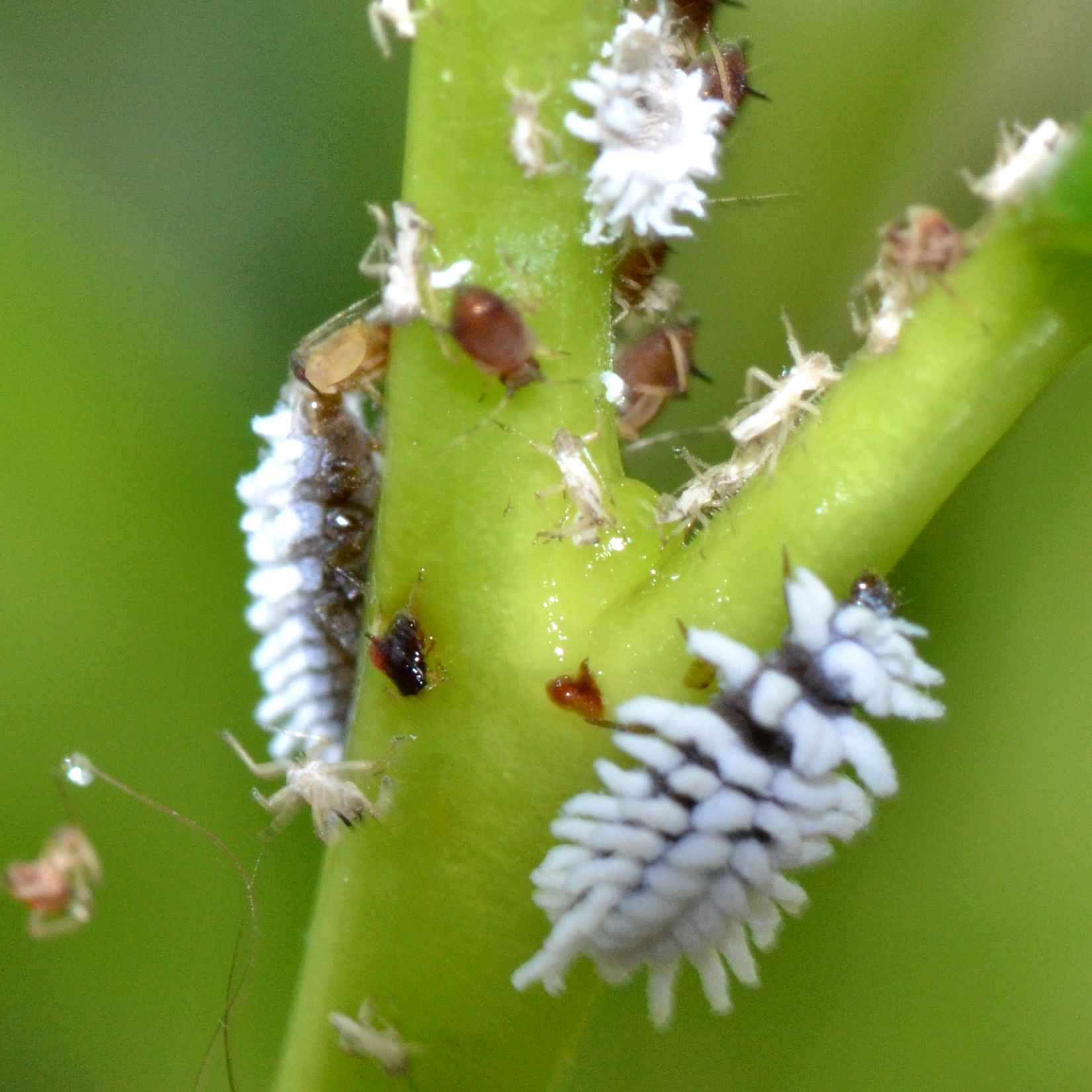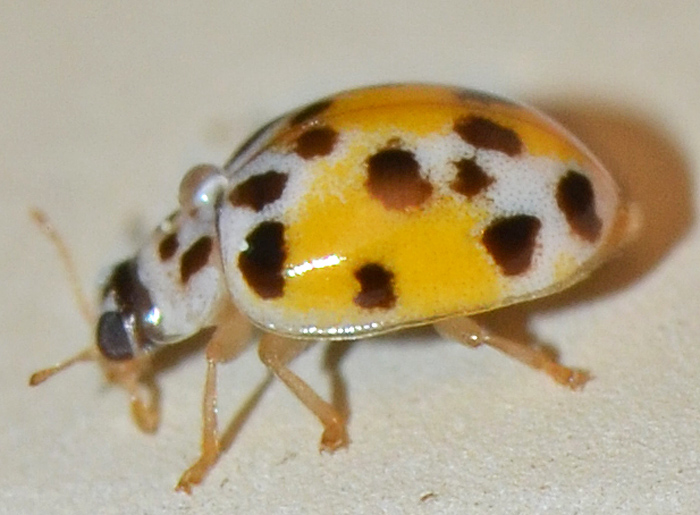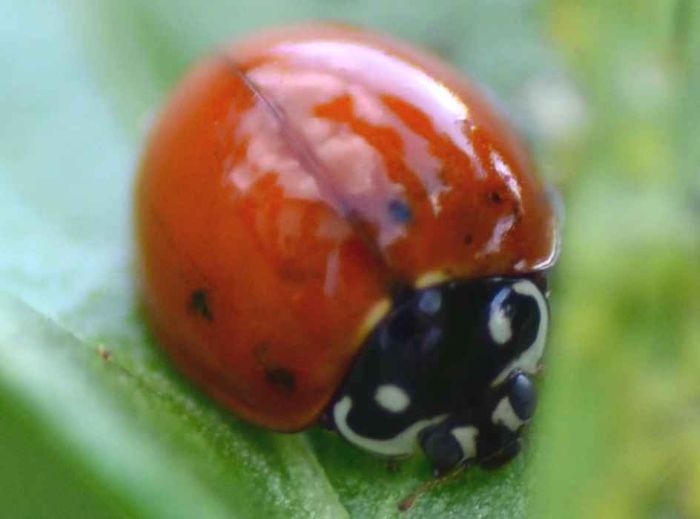 Cycloneda sanguinea (Spotless Lady Beetle) ♀. | Spotless lady beetle: Cycloneda sanguinea (female). The male has an additional (short) white line between the characteristic C-shaped lines. The dark features on the wings are most likely caused by minor injuries during development of the pupa. The genus has three species in North America. bug guide: http://bugguide.net/node/view/548554 | |
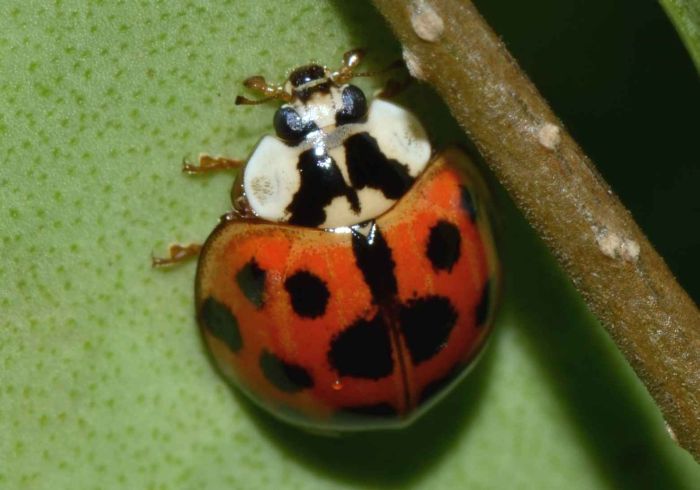 Harmonia axyridis (Asian Ladybug). | A ladybug on a ligustrum leave. It is Harmonia axyridis a.k.a. Asian (or Japanese) lady beetle which comes in numerous colors and has 0-22 spots. I also saw an orange ladybug with no spots at all, which probably belonged to the same species. This species is not "native" to North America; it was introduced deliberately to control aphids. lostladybug: http://www.lostladybug.org/ wikipedia: http://en.wikipedia.org/wiki/Harmonia_axyridis discoverlife: http://www.discoverlife.org/20/q?guide=Ladybug&cl=llp | |
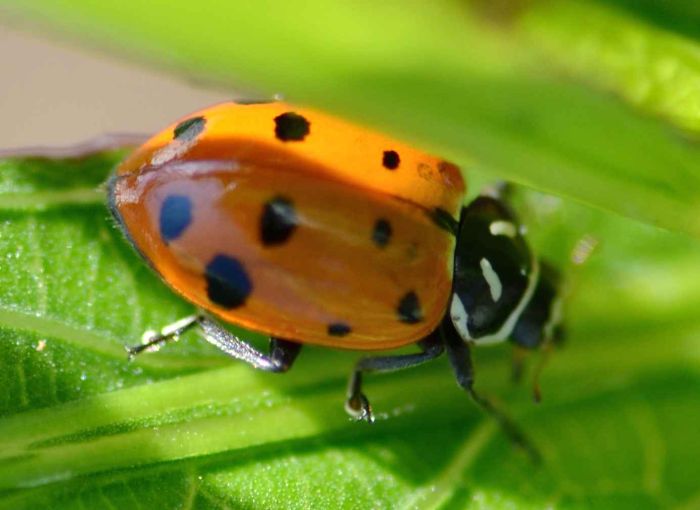 Hippodamia convergens (Convergent Lady Beetle). | This is a convergent lady beetle (Hippodamia convergens). This species can have 13 or fewer spots and has characteristic "convergent" white lines behind their head. H. convergens is a native and also sold for biological pest control. It is among the most common ladybugs in North America. bug guide: http://bugguide.net/node/view/262313/bgimage | |
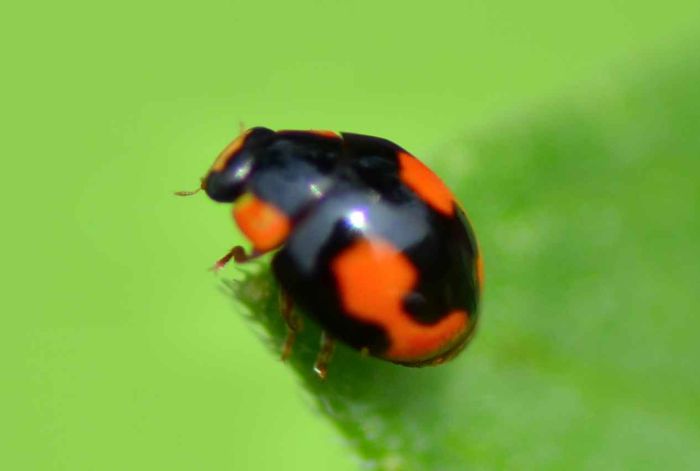 Hyperaspis connectens (Very Small Ladybug). | So far this is the smallest insect on my Web site. This tiny ladybug is Hyperaspis connectens. The species name refers clearly to the connected spot on the elytra. The connected spots are a characteristic feature that (in North America) distinguish this species from other ladybugs. I estimate its size to be 2-3 mm. bug guide (this photo): http://bugguide.net/node/view/547166 | |
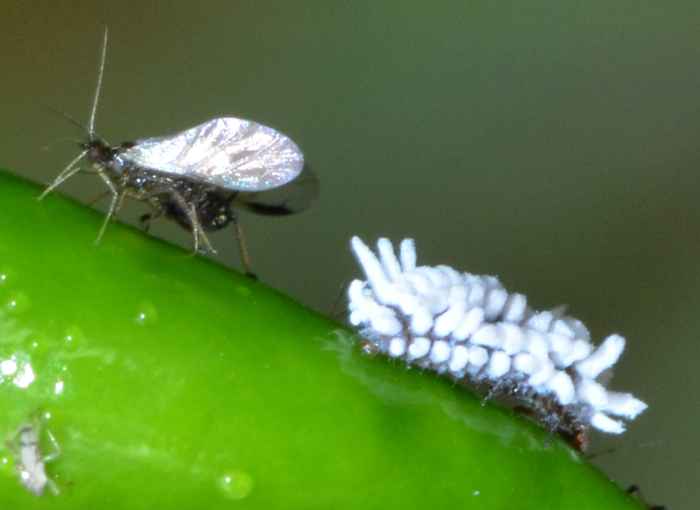 No Taxon - Scymninae Larva (Lady Beetle Larva) - imm. | The larvae of certain lady beetles (those in the subfamily Scymninae) are covered with white wax that can form long "hairy" tufts. The identification of the larvae is very difficult unless one captures them and waits.
bug guide (these photos): http://bugguide.net/node/view/579039 | |
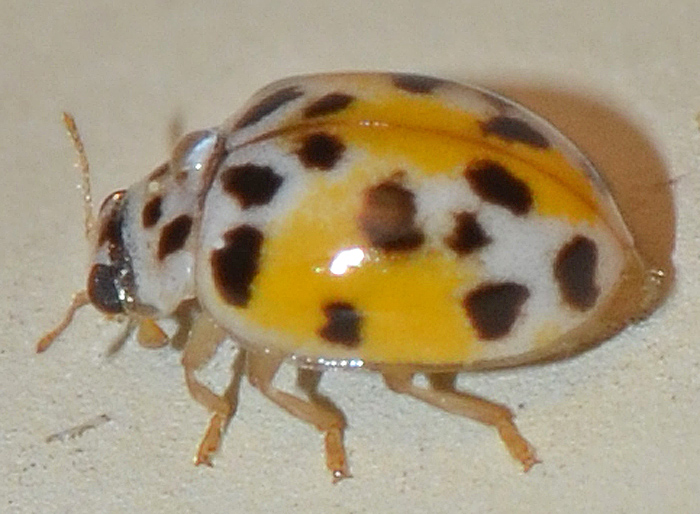 Psyllobora sp.. | The genus Psyllobora (Fungus-eating Lady Beetles) has seven species in the US, of which four occur in Florida but only two are likely to be found in North Florida. I'm curious whether this one is the Twenty-spotted Lady Beetle, because it should not exist in Florida. The small photo shows the same specimen.
bug guide (these photo): http://bugguide.net/node/view/1250949 |

